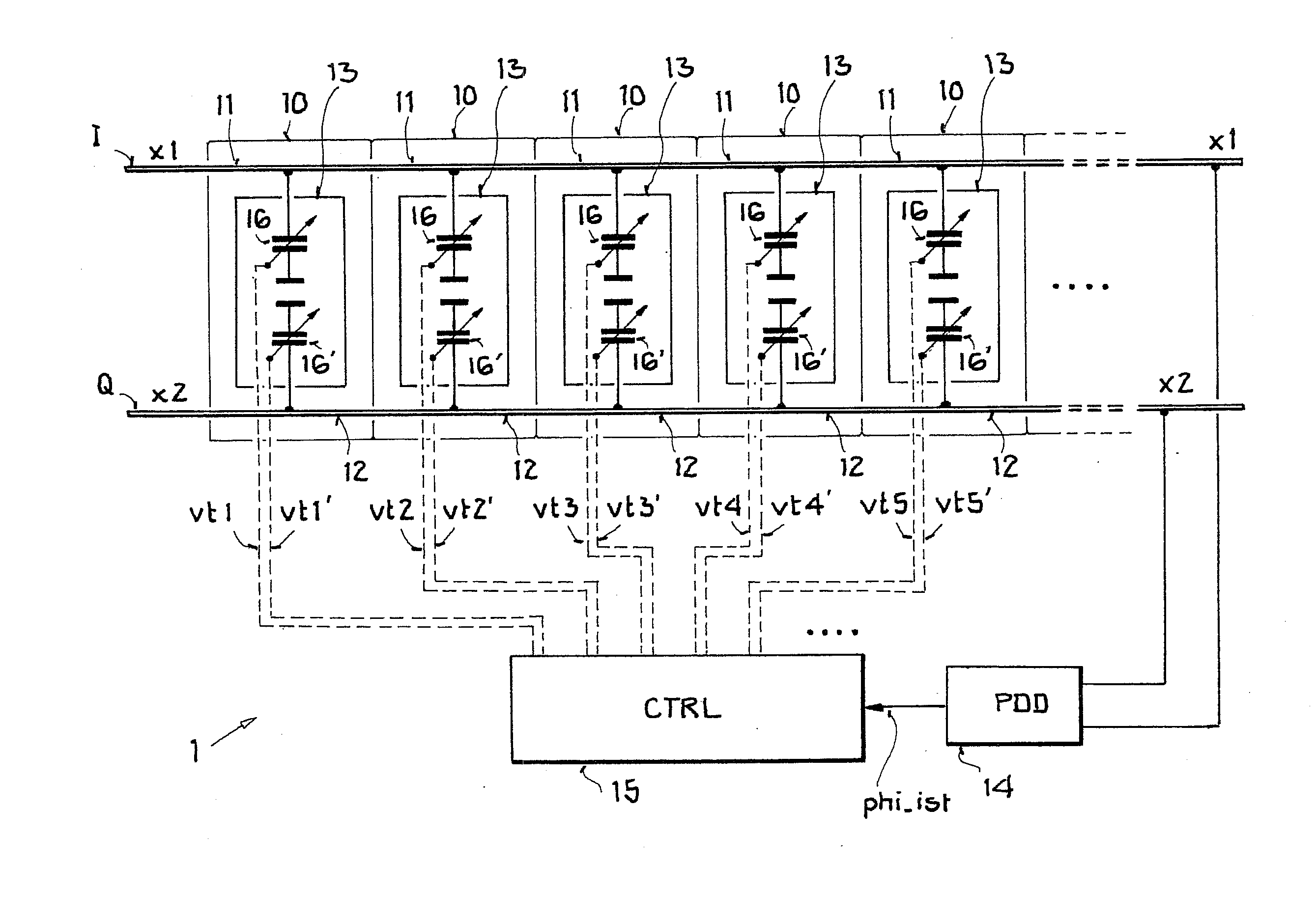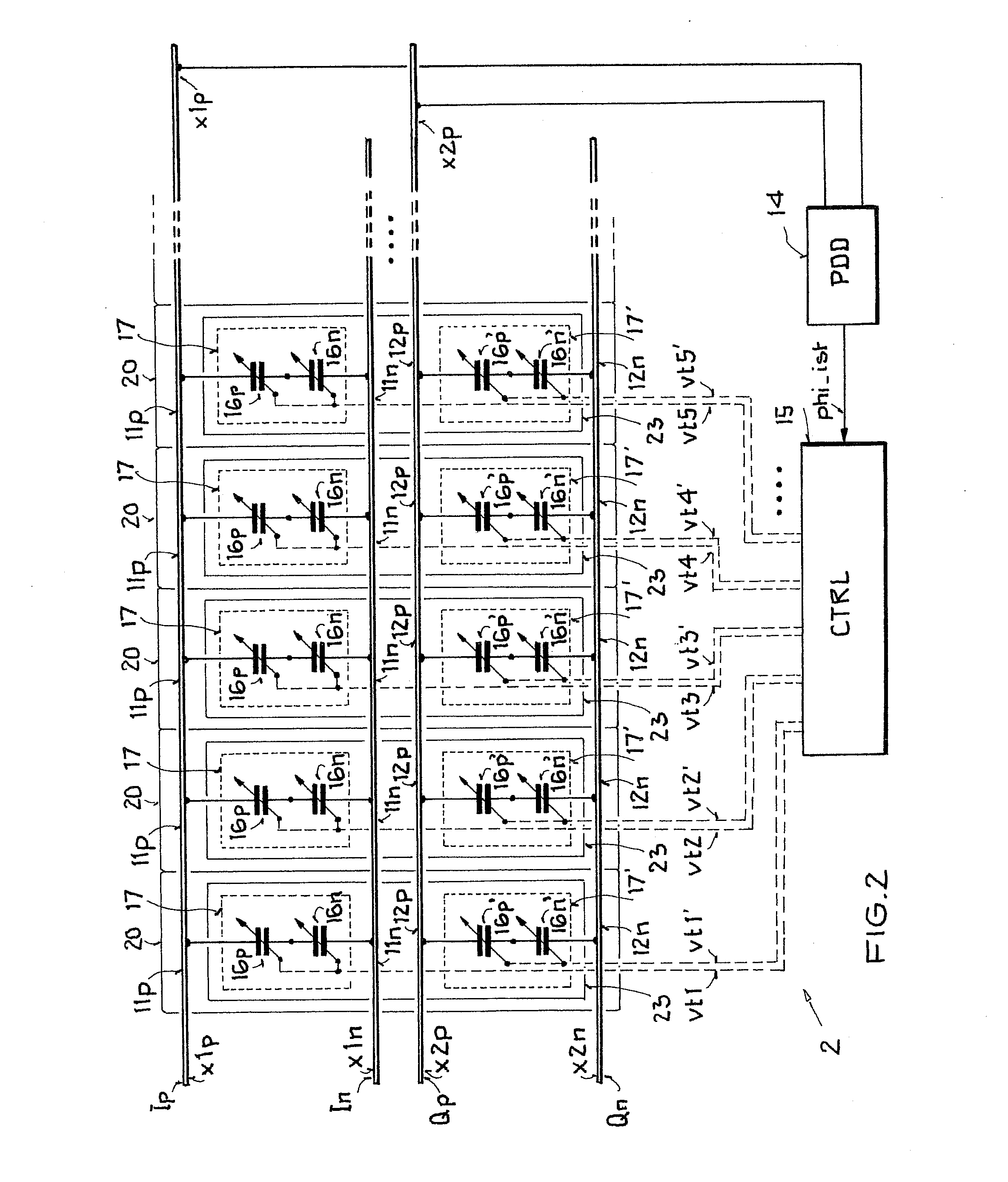Integrated circuit arrangement to set a phase difference
a phase difference and integrated circuit technology, applied in the direction of digital transmission, line-transmission details, duplex signal operation, etc., can solve the problems of affecting small calibration range, and short circuit life, so as to reduce the requirement for chip area, and improve the efficiency of the hf front-end circuit.
- Summary
- Abstract
- Description
- Claims
- Application Information
AI Technical Summary
Benefits of technology
Problems solved by technology
Method used
Image
Examples
Embodiment Construction
[0033]In the figures, the same and functionally identical elements and signals, if not specified otherwise, are provided with the same reference characters.
[0034]FIG. 1 shows a circuit diagram of a first exemplary embodiment of a circuit arrangement of the invention.
[0035]The high-frequency signals x1 and x2 are applied at the integrated circuit arrangement 1 on the input side (on the left in the figure), whereby these are, for example, in the case of x1 the inphase component (I) and in the case of x2 the quadrature phase component (Q) of a local oscillator signal in the gigahertz range. Circuit arrangement 1 makes certain that at its output the signals x1 and x2 have as precisely as possible a predefined phase difference (phase offset) phi_target, which in this case (I / Q offset) is 90 degrees.
[0036]Circuit arrangement 1 has a chain connection (series connection) of a plurality N of basic circuits 10, whereby at least two basic circuits are provided. For example, N=50 basic circuits...
PUM
 Login to View More
Login to View More Abstract
Description
Claims
Application Information
 Login to View More
Login to View More - R&D
- Intellectual Property
- Life Sciences
- Materials
- Tech Scout
- Unparalleled Data Quality
- Higher Quality Content
- 60% Fewer Hallucinations
Browse by: Latest US Patents, China's latest patents, Technical Efficacy Thesaurus, Application Domain, Technology Topic, Popular Technical Reports.
© 2025 PatSnap. All rights reserved.Legal|Privacy policy|Modern Slavery Act Transparency Statement|Sitemap|About US| Contact US: help@patsnap.com



